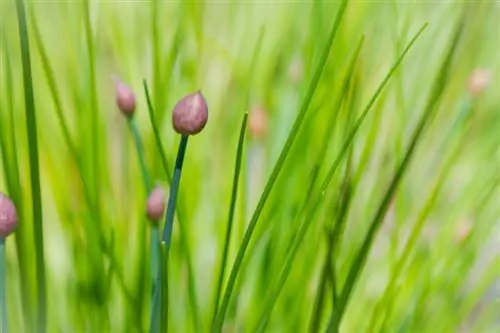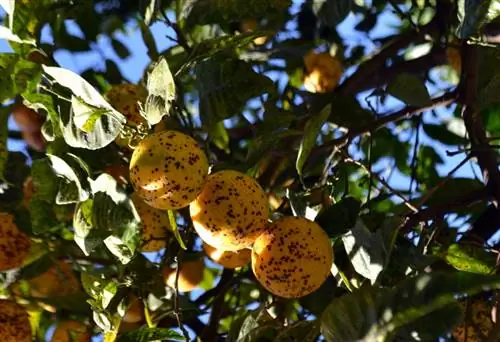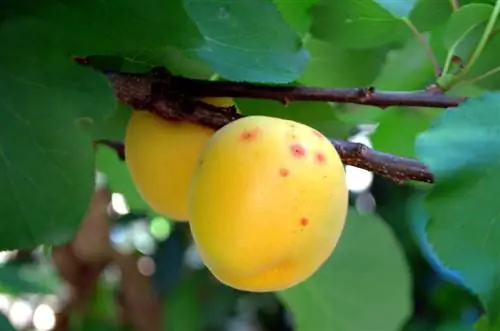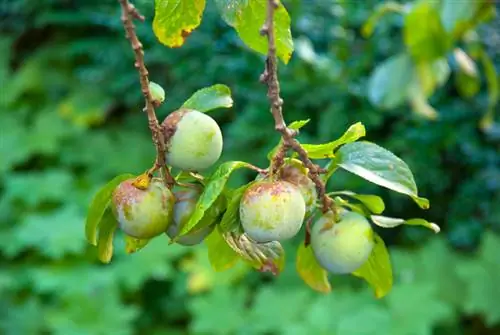- Author admin [email protected].
- Public 2023-12-16 16:46.
- Last modified 2025-06-01 06:02.
Chives are usually rarely attacked by fungi or insect pests - it is usually even recommended to plant chives together with endangered flowers to avoid such an infestation. However, even with this actually resistant culinary herb, infestation cannot always be avoided, with weakened plants being particularly at risk.

What diseases can affect chives?
Chives can turn yellow leaves due to drought or heat, be affected by fungal diseases such as chive rust or, in rare cases, be affected by aphids. In such cases, chives should be treated with a diluted nettle decoction or cut off.
Chives turn yellow
The most common he alth problem with chives is yellowing, dry leaves. Of course, these can no longer be used in the kitchen and they multiply quickly. For this reason, you should take action as quickly as possible at the first signs. In most cases, the chives turn yellow because they are too dry or it is simply too hot. In this case, countermeasures are simple: water the plant more often and protect it from excessive sunlight. Sometimes, however, the chives are too wet so that the roots rot and can no longer supply the above-ground parts of the plant.
Fungal diseases
Especially in damp and cool summers, the leaves of chives are attacked by the rust fungus “Puccinia alli”, the so-called chive rust. You can recognize an infestation by the small, round and rusty red spots on the leaf tubes. Cut the diseased plant just above the ground and water it with a diluted nettle decoction.
Aphids - the gardener’s favorite enemy
Aphids, on the other hand, are rarely found on chives. If so, the unwanted animals primarily attack potted chives on the balcony or on the windowsill - these plants are usually not as robust as planted chives, and in these cases the lice only have a limited food supply and therefore colonize the chives out of sheer distress. Aphids are also best controlled with nettle decoction.
Make nettle stock
Making nettle stock - also known as nettle manure - is very simple, but takes a little time.
- Put on sturdy gardening gloves (€9.00 on Amazon) and long clothing.
- Pick about a kilogram of nettles and chop them up.
- Put the nettles in a bucket.
- Pour about 10 liters of boiling water over them.
- Let the brew steep for about two days.
- Strain the nettles.
Tips & Tricks
Do not treat chives (like other culinary herbs) with chemical agents, otherwise the herb can no longer be consumed. If in doubt, cut the stalks just above the ground - chives will sprout again quickly.






